
313 N. Figueroa Street, Room 806 | Los Angeles, CA 90012
| (213)
For Immediate Release:
April 10, 2025
Public Health Releases Preliminary Soil Testing Results With Unanticipated Elevated Lead Levels in Parcels Downwind from Eaton Fire
The Los Angeles County Department of Public Health released preliminary findings from representative soil sample testing in and around the Eaton and Palisades fire areas, revealing a higher percentage of soil samples with lead levels above health-based screening thresholds from parcels with intact homes downwind of the Eaton Fire.
The preliminary findings also indicate localized chemical impacts to soil above health-based screening thresholds are present in the Palisades fire area, but there is no evidence of widespread contamination from fire-related chemicals.
The County’s soil sampling and analysis, conducted by Roux Inc., measured levels of harmful substances that may be present after a wildfire—such as heavy metals, polyaromatic hydrocarbons (PAHs), and dioxins—on representative soil samples from various parcels in different areas and with different property conditions in and around the Eaton and Palisades fire areas. Over four weeks from mid-February to mid-March, soil samples were collected from destroyed, damaged, and intact properties within the burn areas, as well as from properties just outside, and compared to current residential soil screening level thresholds. A final report and analysis will be available in May.
Levels below the screening thresholds are considered protective over a lifetime of exposure, even for the most vulnerable people. If levels exceed the screening thresholds, it does not automatically mean cleanup is required, but it suggests the need to consider additional evaluation.
Representative soil sampling involves collecting soil samples from different areas affected by the fire to assess contamination levels, such as ash or chemicals, and understand the overall impact on the environment. The preliminary findings and accompanying analysis can be found on the Public Health Post-Fire Assessment page under sections titled Outdoor Soil – Yards and Outdoor Soil – Ash/Soot.
The identification of high frequent lead exceedances in soil samples from downwind of the Eaton fire are consistent with reports of elevated lead in air samples collected in the days immediately following the fire. The source of lead in the fire is reasonably expected to be from the burning of homes with lead-based paint, which was common prior to 1979. CalTech reported that more than 90 percent of the houses in Altadena were built before 1975.
However, because there are many potential sources of lead in soil in the Los Angeles area, additional assessments will help understand how much of the lead found in the samples came from the 2025 wildfires versus other sources.
Testing identified isolated areas of heavy metal and PAH soil sample exceedances above screening thresholds in the Palisades fire area. The source is unknown at this time, but these are not consistent with communitywide impacts from fire-related smoke plumes.
This assessment provides a representative analysis of the soil in areas and under different conditions impacted by the fires. Individual parcels may have unique factors that result in differences compared to these representative samples. The reported results are not intended to imply cleanup or specific remediation is necessary; rather, the results identify areas potentially requiring additional evaluation.
Those with concerns about their specific property may want to test their soil and/or consult an environmental professional about evaluating their property. In all areas with on-going fire debris, residents are reminded to take precautions to not inhale, ingest or come into contact with ash, soot, and/or fire debris by using appropriate personal protective equipment. Additionally, community members are encouraged to review the soil sampling results and consider taking appropriate precautions if your home is in one of the areas where soil sample screening thresholds have been exceeded. Residents can refer to the Los Angeles County Department of Public Health’s
In response to potential health risks from wildfire-related smoke, ash, and debris, the Los Angeles County Department of Public Health is offering free blood lead testing for individuals concerned about exposure to lead. Testing is available through three easy options: by visiting a medical provider (with costs covered by most insurance plans, including Medi-Cal), scheduling a free appointment at a Quest Lab by calling 1-800-LA-4-LEAD, or accessing walk-in mobile testing offered at select community events. Testing is fast, free, confidential, and does not require insurance. Lead exposure can be especially harmful to children and pregnant individuals, and early detection is key. For more information or to find testing locations, visit ph.lacounty.gov/wildfires or call 1-800-LA-4-LEAD (1-800-524-5323).
To have residential soil tested, some examples of resources for soil testing and analysis are listed here. This list is not exhaustive nor an endorsement of any particular group or entity; nor is criticism implied of similar groups or entities not listed.
UPDATED: April 10, 2025
Academic Institutions:
1) Colorado State University, College of Agriculture Sciences https://agsci.colostate.edu/soiltestinglab/
Private Laboratories:
3) CLS Labs (Soil, Water, Environmental)
Rancho Cordova
800-638-7301
http://www.californialab.com/ info@californialab.com
4) Eurofins Environment Testing Calscience
Tustin, CA
714-895-5494
Environmental Consultants:
5) GeoSoils Inc http://www.geosoilsinc.com/
6) American Technologies Inc https://atirestoration.com/
7) National Construction and Remediation Inc http://www.ncrdemo.com/
8) Brunsing Associates http://www.brunsing.com/
9) Unlimited Environmental Inc http://www.ueiteam.com/
#####




